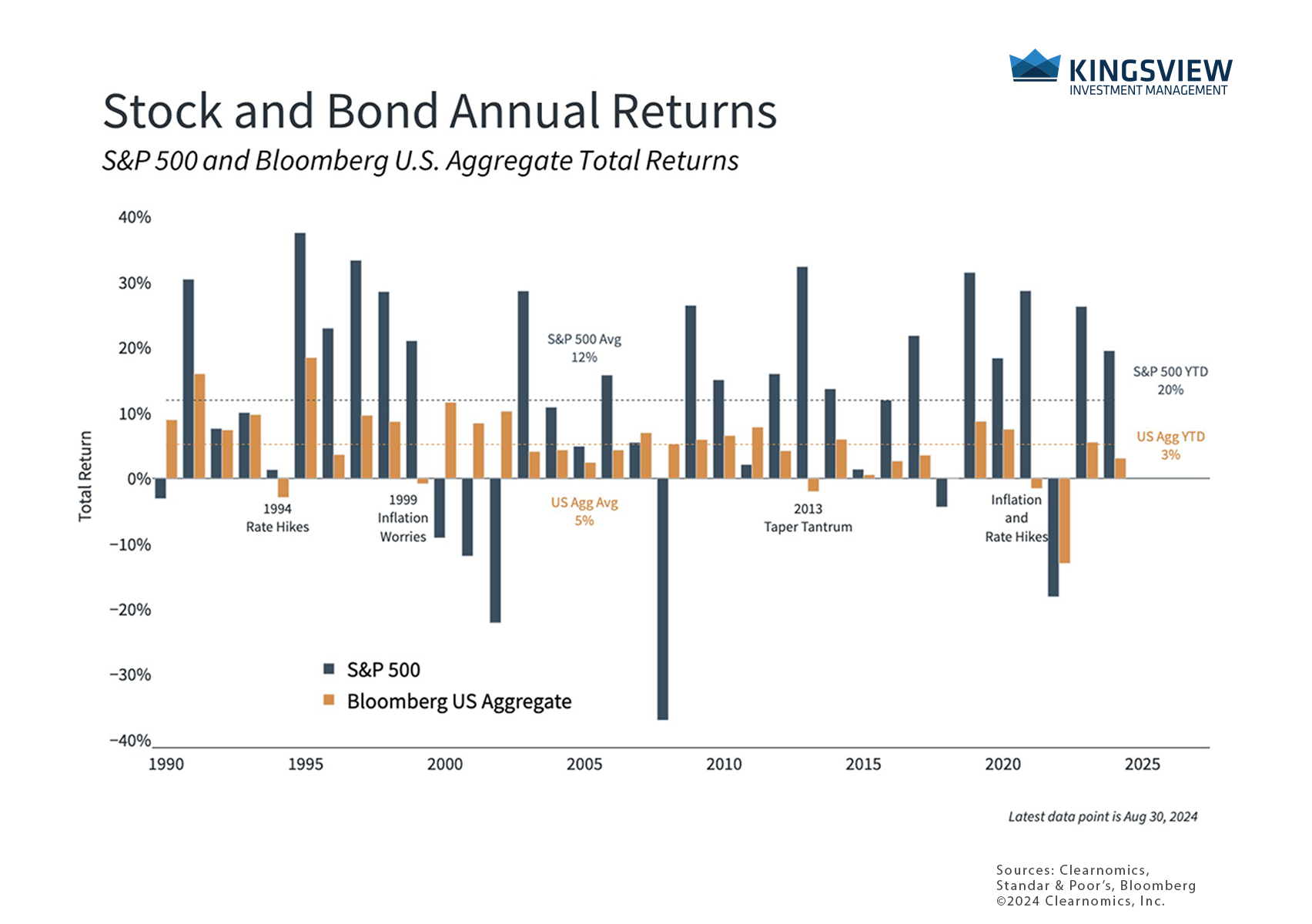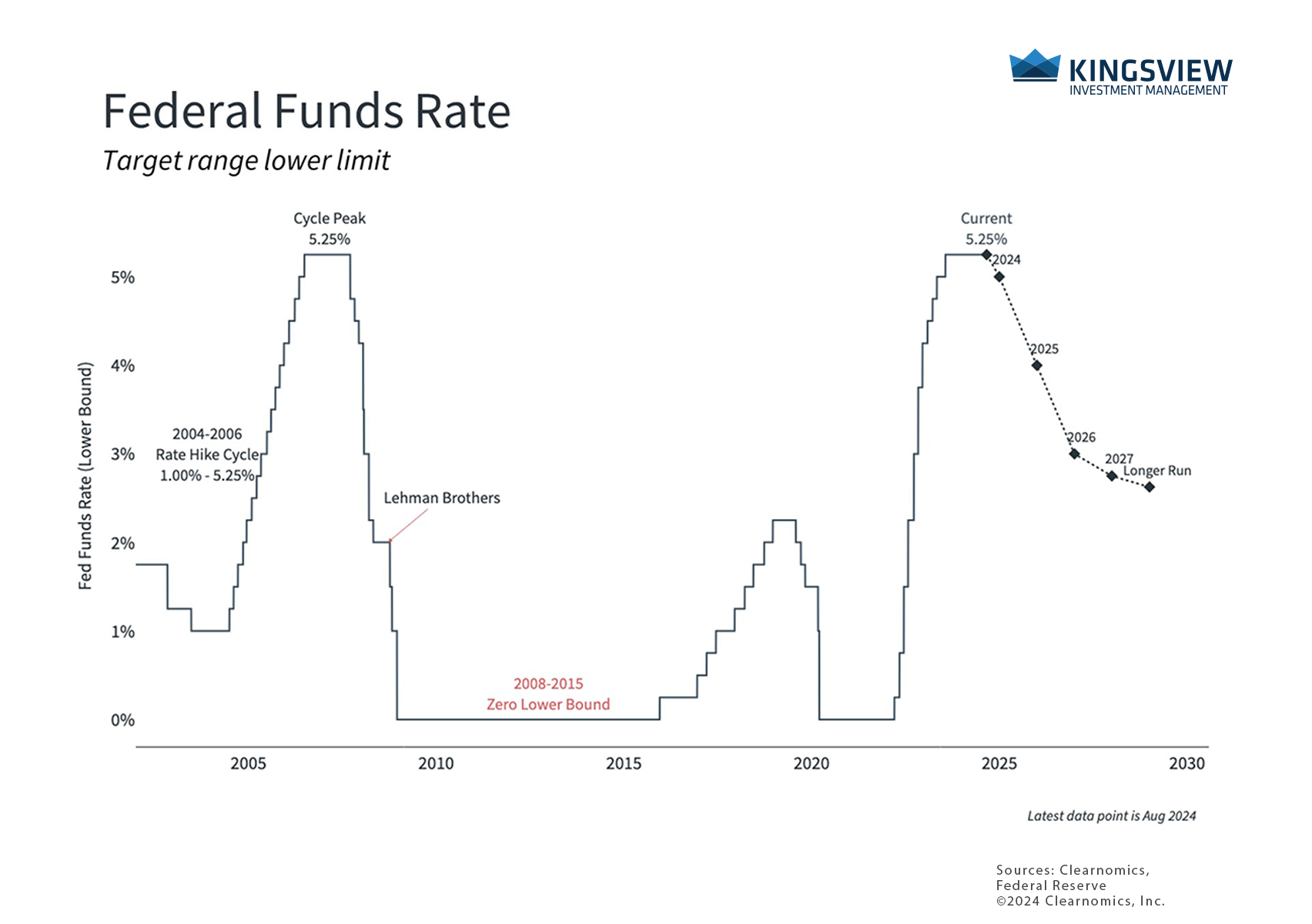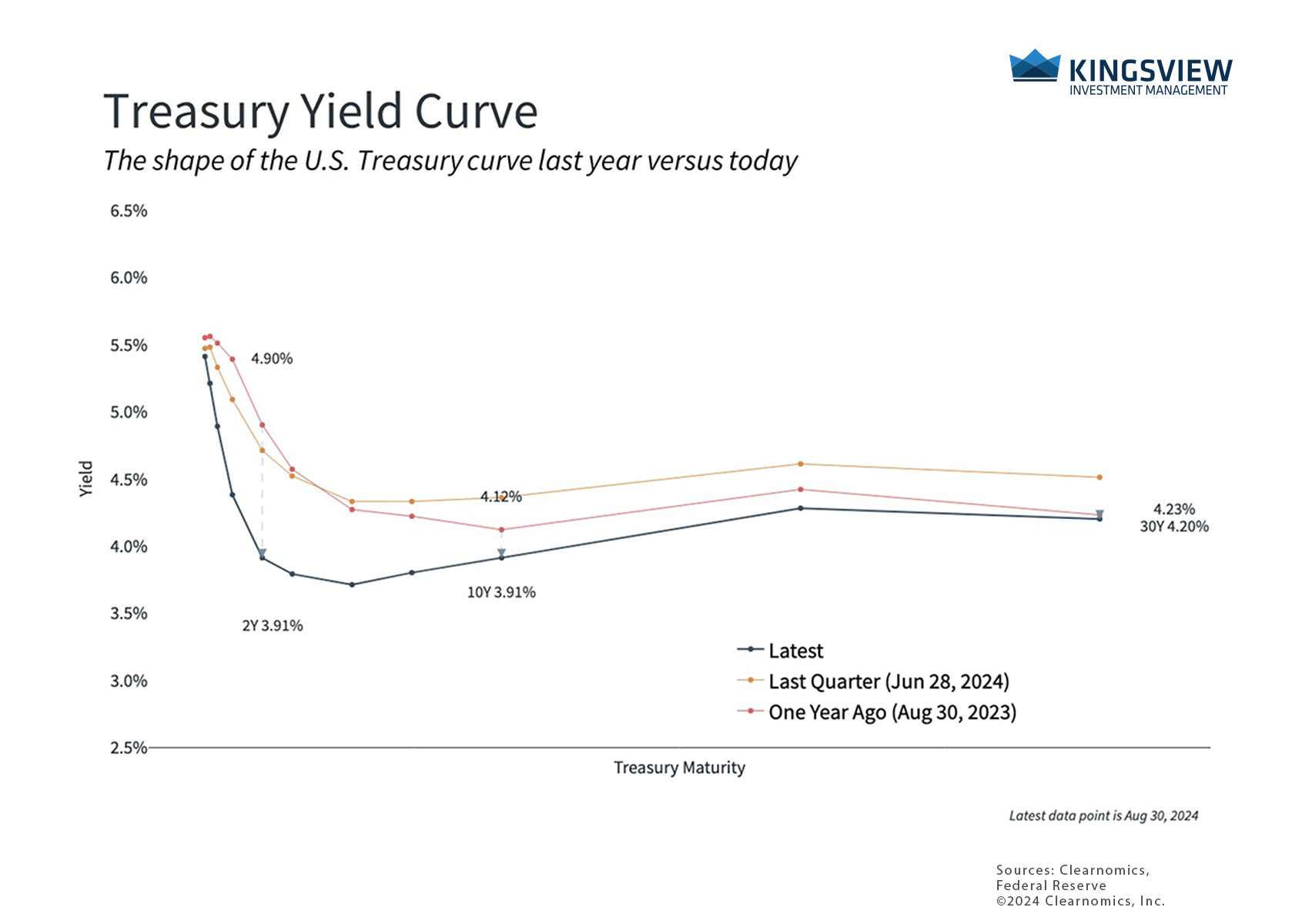Portfolio Manager Insights | 3 Investor Lessons for the Summer's Market Volatility 9.4.24
Click here to download this commentary in PDF format.
As everyone settles into their post-Labor Day routines, it’s a good time for investors to reflect on markets and review their financial plans for the rest of the year. August began with the sharpest market declines in two years, but major indices have rebounded with the S&P 500 only a fraction of a percent from its all-time high. The Federal Reserve is widely expected to announce its first rate cut at its September 18 meeting, which has caused interest rates to stabilize in recent weeks. Inflation remains on a downward trajectory and the broader economy remains strong. So while September is beginning with additional market uncertainty, it’s important for investors to maintain perspective.
In particular, investors should always be prepared for volatility, especially with possible market-moving events in the coming months. There is still uncertainty around the Fed’s full rate cut path, the upcoming presidential election, and ongoing geopolitical risks. What lessons can investors learn from the past few months as they navigate these events and focus on their long-term financial goals?
Markets have rebounded over the past month

First, despite recent market swings, the S&P 500, Nasdaq, and Dow have gained 19.5%, 18.6%, and 11.7% with dividends this year, respectively. The S&P 500 has experienced only two periods of sustained pullbacks this year, with the largest decline measuring 8%, below the historical average. Bonds have struggled much of this year as rates remained high, but the anticipation of Fed rate cuts has helped to boost returns more recently. So while market volatility is never pleasant, it is important not to overreact to short-term events.
The stabilization in the stock market has shifted investor focus back to fundamental factors, particularly corporate earnings. This is because the stock market tends to mirror the trajectory of corporate profits over time, which in turn rises alongside the economy. Current earnings projections are positive with an expected growth rate of 10% in 2024 and nearly 14% over the next twelve months.
Similarly, bonds have performed better, with the Bloomberg U.S. Aggregate Index gaining 3.1% year-to-date and 6.7% since its bottom in April when the 10-year Treasury yield peaked around 4.7%. The high yield bond index has risen 6.3%, the corporate bond index 3.5%, and Treasurys 2.6%, fueled by the current Goldilocks period of improving inflation and steady economic growth. Bond prices also jumped at the beginning of August as they helped to balance stock market swings. These facts emphasize the importance of maintaining portfolio diversification, especially during periods of uncertainty.
The Fed is expected to cut rates in September

Second, the Fed is expected to begin cutting rates later this month after a rapid rate hike cycle from early 2022 to mid-2023. This is primarily because inflation has continued to improve. The Fed’s preferred inflation measure, the Personal Consumption Expenditures Price Index, has decelerated to 2.5% overall and 2.6% when excluding food and energy. Similarly, the headline Consumer Price Index has fallen to only 2.9% year-over-year with the core index declining to 3.2%. While prices are still much higher for consumers than prior to the pandemic, these improvements are enough for the Fed to justify a shift in monetary policy.
Much of the market volatility experienced this year is the result of changing expectations around the Fed. The year began with investors forecasting several rate cuts due to a possible “hard landing.” Then when inflation ran hotter than anticipated in the first quarter, investors believed there would be no rate cuts this year. Now, the Fed is expected to cut rates by about one percentage point through the end of the year. Each of these turns resulted in shifts in the market. This is yet another reminder that markets can get ahead of themselves, and that it’s often better to focus on the underlying trends.
In addition, recent jobs data show that the labor market is still strong but is also softening. The latest employment report, for instance, revealed that 114,000 new jobs were added in July, well short of the 175,000 projected. Unemployment rose from 4.1% to 4.3%, overshooting expectations and reaching a level not seen since the pandemic (though still not a historically high number). In a recent speech, Fed Chair Powell discussed the downside risks to the job market, saying “we do not seek or welcome further cooling in labor market conditions.” Whereas the Fed had been primarily focused on bringing down high inflation, it is now shifting its focus to the job market.
Interest rates are adjusting to a shift in Fed policy

Finally, with Fed rate cuts approaching, market-based interest rates have adjusted as well. As the accompanying chart shows, not only have yields moved lower, especially on the short end of the curve, but the yield curve is no longer inverted. The spread between the 10-year and 2-year Treasury yields has flattened in recent days due to the expected trajectory of rates.
If these moves continue, they could have several potential implications for the economy and markets. One reason some investors expected a recession in 2024 was precisely because the yield curve experienced its sharpest inversion since the 1980s. Historically, yield curve inversions precede recessions since they typically occur later in the business cycle when the Fed has overtightened. While a recession is always possible, this time could be different since higher short-term yields were the result of inflation shocks.
While nothing is certain, lower rates could be positive for economic growth, especially in rate-sensitive areas such as real estate, technology, small caps, and more. As discussed earlier, bonds have benefited from improving rates as well, partially restoring their traditional role as portfolio diversifiers.
The bottom line? How we react to stock market swings is perhaps more important than the market moves themselves. The uncertainty experienced by investors during the summer is a reminder to always stay focused on the long run as they work toward their financial goals.
Historical references do not assume that any prior market behavior will be duplicated. Past performance does not indicate future results. This material has been prepared by Kingsview Wealth Management, LLC. It is not, and should not, be regarded as investment advice or as a recommendation regarding any particular security or course of action. Opinions expressed herein are current opinions as of the date appearing in this material only. All investments entail risks. There is no guarantee that investment strategies will achieve the desired results under all market conditions and each investor should evaluate their ability to invest for the long term. Investment advisory services offered through Kingsview Wealth Management, LLC (“KWM”), an SEC Registered Investment Adviser. (2024)
